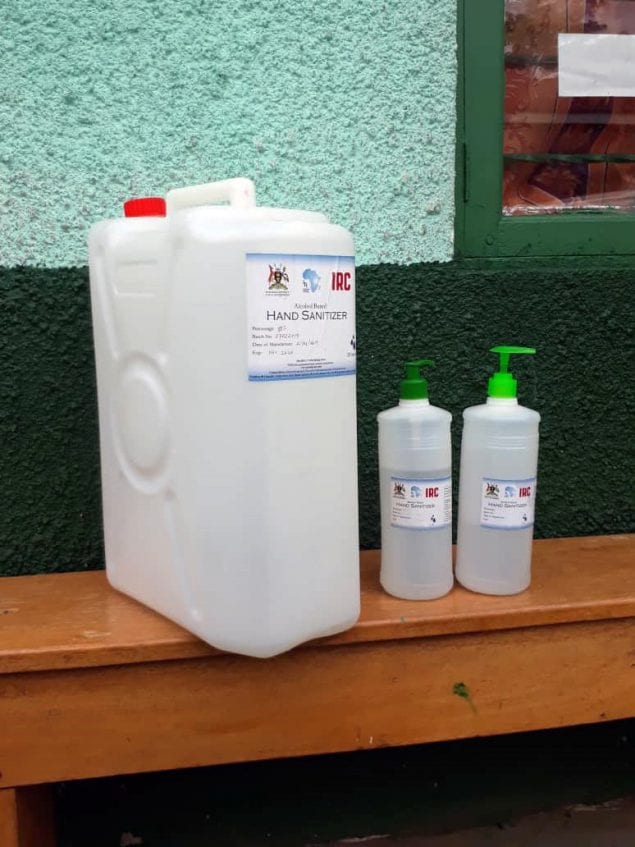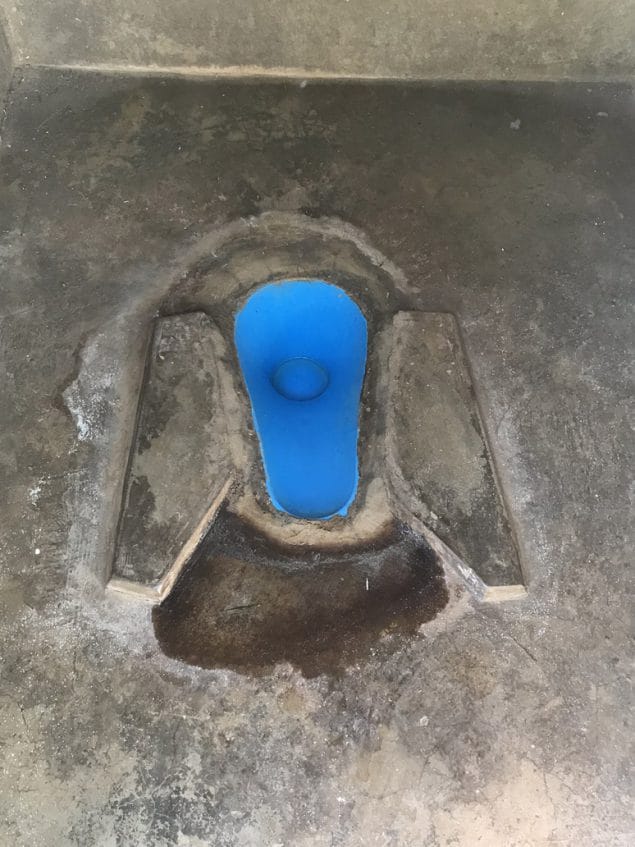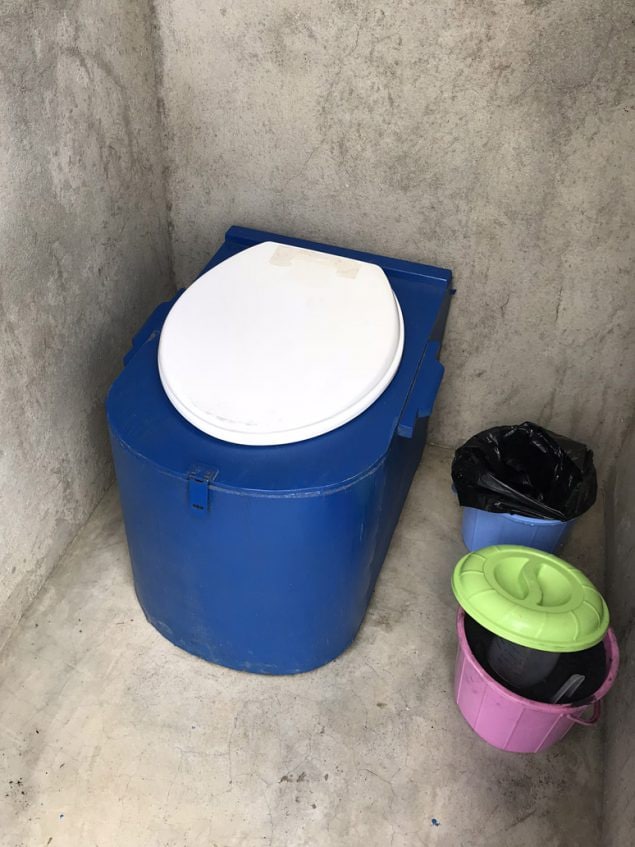Innovations for the Field
CDC works with implementers and partners to monitor and evaluate new water, sanitation, and hygiene (WASH) technologies and innovations for healthcare facilities. The WASH challenges in healthcare facilities, especially in resource-limited settings, often require new or adaptive plans, products, or systems to adapt ‘community WASH’ approaches to the healthcare facility environment. CDC uses mixed-methods expertise—including epidemiology, laboratory methods, and behavioral science—to conduct rigorous evaluations in global settings. These evaluations fill critical evidence gaps, providing implementers and local, regional, and national beneficiaries with objective evaluations to inform policy and improve public health. Three WASH innovations CDC has evaluated are described below.

20L jerry can (left) and 1L bottles for care points (right) of alcohol-based hand rub produced locally in Kabarole District, Uganda for use in district health facilities. Photo credit: Maureen Kesande from the Infectious Diseases Institute
CDC has collaborated with the Infectious Diseases Institute (Makerere University, Uganda), Kabarole District Health Office, and the International Water and Sanitation Centre (IRC) WASH to understand whether alcohol-based hand rub, an established method for clinical hand hygiene in healthcare settings in high-income countries, can be produced and distributed on a local scale in a resource-limited setting. CDC is evaluating a project in Uganda to test the feasibility, acceptability, and effectiveness of local production and district-wide distribution of alcohol-based hand rub at improving hand hygiene among healthcare providers.

Plastic insert built into a latrine drophole. Photo credit: David Berendes
Little work has been done to improve sanitation in healthcare facilities in resource-limited settings, especially short-term improvements to the users’ experience. CDC is working with the Safe Water and AIDS Project (a Kenyan non-governmental organization) and the County Health Office of Kisumu County, Kenya, on a field trial of plastic inserts for latrine dropholes with hinged, self-closing covers that are emptied by pouring water into the pan. These inserts are designed to reduce odors and flies and make the latrine easier to clean. The goal of the evaluation is to understand whether these inserts improve the experience of using the latrine by assessing users’ perceptions of odor and cleanliness, measuring the number of flies in the latrines before and after installation, and interviewing cleaners about the effect of the new latrine inserts on their daily work.

Container-based toilet to be evaluated in inpatient healthcare facilities. Photo credit: David Berendes
While toilets with onsite waste containment, such as septic tanks and pit latrines, are common in healthcare facilities in resource-limited settings, they are typically located outside of the patient care area and require users to be mobile enough to reach them. CDC is collaborating with Sanivation, a nongovernmental organization that implements and manages container-based toilets, to evaluate the feasibility and acceptability of these toilets among outpatients and inpatients in wards. Container-based toilets are mobile and may be easily moved between wards. They are raised and thus may be more easily used by people hospitalized for injuries or illnesses that would prevent them from squatting. They are covered to contain odors and can be serviced more regularly and managed more safely than traditional bedpans. Although sustainable container-based sanitation projects for households currently exist in Ghana, Haiti, Kenya, and other resource-limited settings, this is the first set of evaluations in healthcare facilities in Kenya. The evaluation project will help us understand whether this technology is appropriate for healthcare facilities.